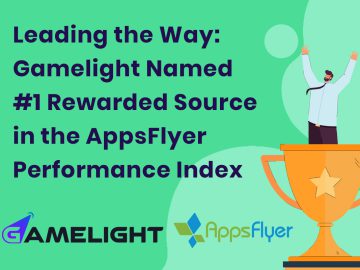Presented by AppsFlyer
Regardless of Google’s decision to not kill off cookies, marketers are facing challenges with the data they have to work with. The balance between user privacy and effective marketing is more critical than ever. Signal loss, characterized by the decline in user-level data identifiers, has emerged as a significant hurdle for marketers striving to target, measure and optimize their campaigns effectively. According to McKinsey, up to $10 billion is at risk in the U.S. alone due to signal loss. Fortunately, innovative strategies and tools for measurement and attribution can address these challenges, enabling marketers to thrive in a landscape reshaped by stringent privacy regulations and technological shifts.
Understanding signal loss and its implications for advertisers
Signal loss refers to the reduction or elimination of data signals that advertisers rely on to track, measure and optimize their campaigns. This can happen due to privacy regulations such as GDPR and CCPA, which restrict how companies collect and use personal data. Additionally, browser updates from Safari and Firefox that block third-party cookies, mobile operating system changes like Apple’s App Tracking Transparency (ATT) framework and the increased use of ad blockers all contribute to signal loss.
The implications of signal loss for advertisers are significant. It reduces targeting precision, making it harder to deliver personalized ads, and complicates attribution, disrupting the tracking of user journeys across devices and channels. The lack of clear information paints an unclear picture which leads to a misunderstanding of customer journeys. The troubles don’t end there — by not having a good understanding of the data, advertisers lack confidence in their campaign performance and its measurement, which has tentacles of its own like a reduced investment in marketing spend and/or inefficient budget allocation. This uncertainty in campaign performance data can lead to inefficient budget allocation.
As a result, advertisers must increasingly rely on first-party data, invest in privacy-first solutions and adopt flexible budgeting strategies. The dominance of walled gardens like Google and Facebook, which have vast amounts of first-party data, also increases.
To adapt to signal loss, advertisers should embrace privacy-enhancing technologies, focus on creative and compelling content and invest in data infrastructure. They need to develop transparent data practices to maintain consumer trust and comply with regulations. Collaborating with industry partners to create new standards and solutions for a privacy-centric advertising ecosystem is also crucial. By adopting these strategies, advertisers can continue to effectively reach and engage their audiences in an evolving digital landscape.
Challenges faced: Fragmented data and limited, delayed signals
In the three years since iOS 14.5 rolled out introducing new hurdles for apps, marketers have been inundated with campaign data from varied sources in multiple formats, making it challenging to assess campaign performance. Data from mobile measurement partners’ attribution, the Apple App Store, and SRN attribution contribute to this fragmented landscape, hindering optimization and scalability due to the absence of standardization.
Unlike the comprehensive data sets enabled by Apple identifiers for users (IDFA), current alternatives like Apple’s SkAdNetwork (SKAN) provide delayed signals and restricted insights. The lack of real-time signals for optimization poses a significant challenge for marketers. Apple’s recent announcement of the Ad Attribution Kit likely will not change the landscape too much.
Strategies to overcome signal loss
Despite these challenges, marketers can adapt by leveraging available data signals and aggregating disparate sources into a coherent overview. With cross-company data sharing facing restrictions, the value of third-party data diminishes, making first-party data an invaluable resource. Marketers should prioritize the collection and utilization of first-party data, enabling enhanced user acquisition and re-engagement campaigns.
Measurement and attribution tools in your tech stack can play a pivotal role in addressing these challenges by offering the following strategies:
Modeling, the data analysis technique used by marketers to evaluate the impact of different marketing activities on sales and to determine how they want to optimize where they allocate marketing resources (read: their budget) across various channels, has been around for years — but wasn’t truly needed in the past since most data was deterministic. However, for marketers who are grappling with signal loss (pretty much everyone), it becomes a must. Some are utilizing AI-driven modeling solutions to help fill in data gaps by leveraging lifetime-value data, real-time signals and geo-level data for various timeframes. Others use in-house custom tools to fill this need. This approach ensures that even with limited data from SKAN or the upcoming Privacy Sandbox, marketers can achieve accurate performance insights.
Leveraging alternative measurement approaches like incrementality testing has become crucial, especially amidst signal loss. As traditional tracking methods face increasing limitations due to privacy regulations and technical challenges, incrementality testing offers a robust solution to understand the true impact of marketing efforts. By isolating the effects of specific campaigns, this method allows marketers to discern whether their strategies are genuinely driving results or merely capturing existing consumer behavior. This granular insight is vital for optimizing budget allocation, refining targeting techniques and ultimately enhancing the return on investment. In an era where data accuracy is paramount, incrementality testing provides the confidence needed to navigate the complexities of modern marketing with precision and efficacy.
Creating new signals
With fewer bottom-funnel signals, more focus is now placed on the top of the funnel where there is an abundance of data tied to creatives and campaigns. AI-driven solutions can identify granular elements within ads, providing deeper insights into what makes a creative effective.
- Enriched-Engagement Types (EET): The current attribution standard focusing on clicks or views has significant limitations. AppsFlyer led a coalition of organizations to develop a new standard, Enriched Engagement Types, that would help set a consistent and trusted standard for clicks and views across the app ecosystem. New frameworks that collect a broader range of engagement signals — from impressions to various types of clicks and interactions — are redefining attribution logic.
- First-Party Data: As data sharing between companies becomes more restricted, the value of first-party data increases. Solutions that enable marketers to maximize the potential of their own data can enhance user acquisition and re-engagement efforts.
- Beyond Mobile: Collecting new signals from other assets such as Web, CTV and PC & Console provides unique opportunities to engage with a user base. By connecting attribution across channels, marketers can gain a holistic understanding of cross-platform marketing effectiveness.
Finding a single source of truth (SSOT)
Data fragmentation has led to a convoluted reality where marketers struggle with multiple data sources. A Single Source of Truth (SSOT) solution consolidates data from various sources into a unified view, leveraging machine learning and advanced analytics to provide a comprehensive understanding of campaign performance. This approach enables marketers to take action with confidence, driving growth and optimizing campaigns effectively.
The bottom line
As marketers navigate the complexities of signal loss, employing cutting-edge strategies and embracing new data signals will enhance their resilience. Tools like modeling, AI-driven insights, enriched engagement tactics, first-party data utilization, cross-platform attribution and unified data sources provide a roadmap to reinforce measurement confidence and optimization strategies, ensuring marketers thrive in the face of signal loss challenges.
Signal loss has created a challenging environment for performance marketers. With diminishing user-level data, driving growth is significantly harder. However, innovative solutions to fill in the gaps in existing data and create new data signals enable performance marketers to regain control and measure their campaigns with confidence. By leveraging robust measurement and attribution tools within their tech stack, marketers can simplify their data picture, providing a single source of truth they can trust and act upon.
As President and General Manager, Brian Quinn runs global mobile marketing leader AppsFlyer’s go-to-market strategy and operations for North America. Quinn brings over 15 years of experience in sales leadership and business development — scaling revenue, building high performing growth teams, while executing go-to-market strategies in a variety of internet software businesses across the mobile, marketing, and data/analytics industries such as App Annie, Kenshoo, and AT&T.
Sponsored articles are content produced by a company that is either paying for the post or has a business relationship with VentureBeat, and they’re always clearly marked. For more information, contact sales@venturebeat.com.





